Brewmasters and home brewers talk about the renaissance of an age-old beverage. Video by Devin Hahn
 smooth, full-flavored beverage with dark fruit and licorice notes in the aroma. Pairs well with beef and earthy cheeses.
smooth, full-flavored beverage with dark fruit and licorice notes in the aroma. Pairs well with beef and earthy cheeses.
The description above is not some sommelier’s assessment of a $42 pinot noir; it comes straight from Harpoon Brewery, and it describes Leviathan Baltic Porter, one of more than 60 beers that have been made by the eighth-largest craft brewer in America.
Al Marzi, Harpoon’s chief brewing officer, says the flavors and aromas that his recipes produce result in a beverage imbued with character, not vanity. “Craft beer is sociable,” says Marzi (COM’90), who started at Harpoon as a truck driver 21 years ago. “It’s not snobby. It’s accessible to everyone. That’s what we want people to take away.”
Beer has changed. The thin, tasteless stuff has been replaced by a multitude of brews that for 25 years have been challenging and rewarding us with a whole new idea of what beer should taste like. President Barack Obama, for example, thinks it should taste like the White House Honey Ale that is home-brewed at 1600 Pennsylvania Avenue.
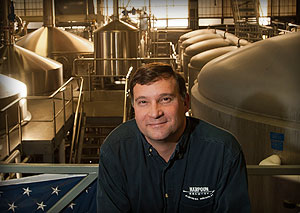
Al Marzi
What is the right way to pour a beer?
I hold the glass at an angle and start the pour down the side of the glass. About halfway through, I straighten out the glass and pour in the middle in order to end up with about an inch worth of foam. Then I swirl the beer in the glass to release the aroma before I take the first sip.
Photo by Kalman Zabarsky
“Americans were kind of a laughingstock 20 years ago when it came to beer,” says Garrett Oliver (CGS’81, COM’83), a leading beer expert and brewmaster of Brooklyn Brewery, in Brooklyn, N.Y., one of the 2,075 craft breweries in the United States. “But today, the American craft beer scene is representative of beer in the world. Now, America is where the excitement is coming from.”
None of those breweries, whose leaders include Harpoon, Brooklyn Brewery, Sierra Nevada, New Belgium Brewing Company, and Boston Beer Company (maker of Sam Adams), make more than six million barrels a year. And while six million may sound like a lot of barrels, it’s all relative. Anheuser-Busch InBev, maker of Budweiser and Corona, sold 106 million barrels in 2010—10 times as much as the entire craft industry.
The Brewers Association, a national trade group for independent brewers, reports that craft beer sales represent 9.1 percent of the $95.5 billion U.S. beer market. The industry saw a 15 percent jump in sales in 2011, a year when beer sales dipped 1.3 percent as a whole. This after a 12 percent increase in 2010 and a 10.3 percent jump in 2009. And craft beer experts predict that the 2,075 craft breweries—more than have existed since 1890—will increase by 900 in 2013.
Beer has been a staple in this country ever since the lack of it compelled the Pilgrims to stop in Plymouth, Mass., when the Mayflower ran dry (beer was safer to drink than water). In the 19th century, immigrants from Germany and other beer-drinking countries arrived with few belongings, but many recipes for beer and ale. By the 1890s, there were roughly 2,000 breweries in the United States, and every one of them was officially closed in January 1919 with the ratification of Prohibition. When Prohibition was repealed 14 years later, America’s history of flavorful beer was stunted by the Depression, as brewers resorted to less expensive grains like rice and corn.
It wasn’t until the last decades of the 20th century that American brewers got their groove back, thanks in large part to home brewers with entrepreneurial aspirations. When Harpoon was founded in 1986, the company was granted Massachusetts Brewing Permit 001. It was the state’s first brewery start-up in 25 years. Harpoon produced 500 barrels of beer that year; by 2012, it was up to 200,000 barrels.
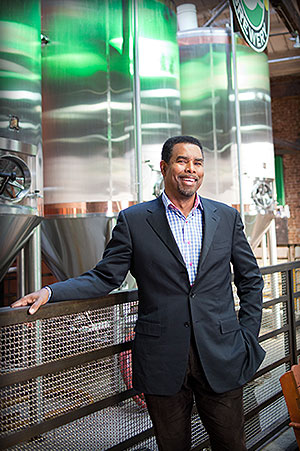
Garrett Oliver
Is there a type of glass that’s best for drinking beer?
The best glass depends on the type of beer and where you are. Snifters are great for powerfully flavored beers, because you can pay close attention to flavors. Small glasses can be best for parties, and the curvy British pint glass is just right for bitters, pale ales, and IPAs, especially if you’re at a pub. The ubiquitous shaker glass has no character at all; I’ve never met a brewer who likes them.
Photo by Joshua Paul
After graduating from the College of Communication, Marzi looked for a job in advertising. When a friend introduced him to Harpoon cofounder Rich Doyle, Marzi proposed that he handle the young company’s advertising. Doyle said he had an opening for a truck driver. “I drove the truck for 10 months and learned a lot about the industry just from being inside the bars and restaurants. I became head brewer and went to the Siebel Institute of Technology in Chicago. When I got into the industry, you could do that kind of thing—start in the mail room and work your way up.”
Oliver lived in London for a year after leaving COM; he found himself in a pub the first night he arrived. The barkeep handed him a pint of room-temperature ale in a “dimpled fishbowl” and a whole new world of beer was unveiled. When Oliver returned to New York, he started brewing at home, and in 1987 he cofounded the New York City Homebrewers Guild. Two years later, he became an apprentice at the now-defunct Manhattan Brewing Company. He joined Brooklyn Brewery in 1994.
“There’s nobody who goes into beer brewing as a business,” he says. “It all comes from passion. You fell in love with it first, you found it fun, and then you did it professionally. That’s what makes American craft brewing powerful.”
Oliver, now the editor of the Oxford Companion to Beer, believes that the interest in craft beers is part of a wider enthusiasm for artisanal foods. Today, he says, there is a beer to be paired with just about any dish, from Mexican to Japanese, barbecue to Michelin-starred. A stout can be matched with a dessert to pull out the chocolate and chestnut flavors, or a light, citrusy Belgian witbier will balance a delicate fish.
These days, the New York Times and Washington Post regularly write about new beers as if they were movie releases, the interest in home brewing has soared, and specialty beer stores all over the country carry hundreds of different types of craft beer from around the world.
Meanwhile, all-women groups like the Pink Boots Society, a professional organization of women in the brewing industry, and Ladies of Craft Beer encourage women to home-brew and become craft brewers. Smaller microbreweries, like Peak Organic in Maine and Eel River Brewing in California, make beer with organic ingredients, and others use bourbon barrels to age their beer. And in November 2012, Anheuser-Busch InBev, which sells the craft-like beers Goose Island and Shock Top, formed its own Craft Advisory Board.
With the 900 new breweries expected to open this year, and planned expansions at larger craft brewers like Harpoon and Brooklyn Breweries, some in the industry worry that the craft beer movement might become too big for its market.
But Marzi doesn’t buy it. He can’t imagine that beer drinkers who appreciate the newer brews will ever go back. “It simply becomes a part of what you do,” he says. “It even changes your taste in food. You don’t go backward.”
The Couple Behind
Brooklyn Brew Shop
Alums Erica Shea and Stephen Valand, who sell home-brew kits, want to demystify brewing. Video by Alan Wong
AT THE HEIGHT of the recent recession, in 2009, Erica Shea (CGS’04, COM’06) and Stephen Valand (CAS’07, COM’07) quit their jobs to invest in beer. The former film majors realized that most home-brew kits made five gallons of beer at a time, far too much for a typical New York City apartment. They also saw that the instructions on existing kits were hardly user-friendly, with words like “acidulation” and “fluctuation.”
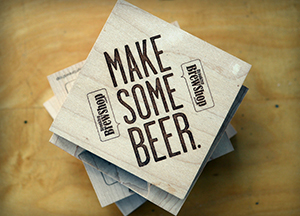
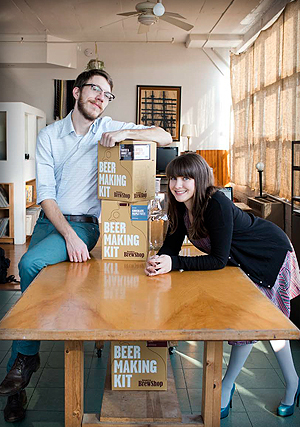
Erica Shea and Stephen Valand
I AM NOT A BEER DRINKER. WHAT SHOULD I TRY?
Our go-to beer for newcomers is the superlight and lemony Sorachi Ace from Brooklyn Brewery. It’s complex while still easy drinking. For dessert lovers, we recommend Pretty Things Baby Tree out of Cambridge, Mass. Dark and full-bodied, it’s perfect with rich chocolate dishes. A nice all-purpose beer is Allagash White Ale from Maine, which is light, delicious, and everyday drinkable.
Photo by Joshua Paul
“We wanted to demystify brewing by taking it back to the kitchen,” says Shea. They also wanted to sell home-brew kits and ingredient mixes for small-scale brewing in tiny city apartments. They named their venture Brooklyn Brew Shop.
The entrepreneurs started sawing and rejiggering plastic tubes and clamps to make a better, simpler kit, one that included most ingredients a home brewer would need (grain, hops, and yeast), as well as clearly written, foolproof instructions.
Luck was with them. The couple’s first sales outlet was a booth at the Brooklyn Flea Market. The flea market happened to be right across the street from a Whole Foods store, whose proprietors took an interest in the home-brew kits. Whole Foods put 30 kits on its shelves. Less than three hours later, they were all sold. The next day, it happened again.
Now Brooklyn Brew Shop kits are sold in Whole Foods and Williams-Sonoma stores across the country, in Europe, and in South Africa. The product has been featured in the New York Times, on NBC, and in Food & Wine magazine. Shea and Valand use their film skills to produce simple, step-by-step home-brewing tutorials. They have teamed with Brooklyn Brewery to sell that company’s ingredient mixes, and they hope to cut similar deals with other breweries. Their first beer cookbook, 2011’s Brooklyn Brew Shop’s Beer Making Book, explains how to make beers as varied as a lobster saison and a bourbon dubbel.
“Beer that you make on your stove is yours entirely,” Valand says. “No beer in the world tastes exactly like it.”
“And,” says Shea, “it gains you a lot of friends.”
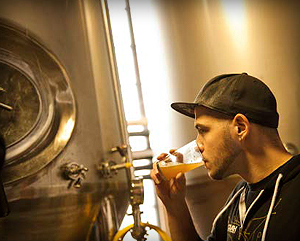
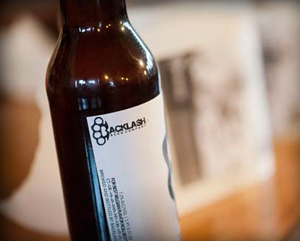
Helder Pimentel
Is it OK to send a beer back to a bartender?
Yes, with a good reason, such as if the beer has off flavors, like sourness or mustiness. With a draft beer, you can also avoid that scenario by asking the bartender for a sample before ordering a full beer. Most places are more than happy to let you taste it first.
Photo by Kalman Zabarsky
LIKE THE LEGENDARY masters of Silicon Valley, Helder Pimentel started his business in his garage, tweaking craft beer techniques and recipes for seven years. In 2011, after years of listening to his friends tell him that his beer was good enough to sell, Pimentel (CGS’04, SMG’06) left a lucrative banking job and launched Backlash Beer Company with partner Maggie Foley.
Pimentel says Backlash, based in Holyoke, Mass., targets a younger demographic than other craft brewers. Its labels sport a set of brass knuckles and names like Groundswell (a Belgian Blonde) and Declaration (an IPA). The company hand labels, wax dips, and stamps all of its beer. But what really sets Backlash apart, says Pimentel, is taste. “My strategy with what we brew is to make beers that would be easily respected by someone who is just exploring the craft brew space,” he says. “My mission is to bring over the fringe drinkers who don’t know where to begin.”
Backlash is one of many start-up craft brewers that rents space and equipment from a bigger brewery, which allows it to focus on brewing and marketing, rather than building infrastructure. Pimentel spends a few days a week visiting bars and restaurants in the New England area, asking if they would like to try his beer. More than 50 restaurants and bars serve Backlash.
“I made a business plan when we started, and we’ve blown everything out of the water,” Pimentel says. “I think the market is primed for local anything, and local beer fits into that.”
Beer Goes Back to
The Future

George Schwartz
“From the beginning of the colonial era, in England, through the Revolution, and into the early days
of the New Republic, beer is seen as something medicinal, something good for you. Thomas Jefferson extolled the wonders of beer because he thought people were drinking too much whiskey, which was causing disease and death.”
Photo by Kalman Zabarsky
GEORGE SCHWARTZ IS a historian who loves beer. A doctoral student in the Graduate School of Arts & Sciences American & New England Studies Program and a former assistant curator for exhibitions and research at the Peabody Essex Museum, his lectures often focus on what people want to hear: beer.
“There is such a range of types and styles of beer you can make that aren’t possible with wine and Scotch,” says Schwartz (GRS’14).
Unsurprisingly, Schwartz has a keen interest in the new movement to brew old beers. He notes that craft brewer Dogfish Head has used ingredients found in a 2,700-year-old drinking vessel from the tomb of King Midas. Its Midas Touch, which the brewer describes as a cross between wine and mead, has received more medals than any other Dogfish creation.
Another small company, Shmaltz Brewing, attempted to make a batch of an English-style porter made by George Washington, using a recipe found in the New York Public Library. The first attempt produced beer that was overwhelmingly syrupy and bitter. When the company dialed back on the molasses, the brew was perfectly drinkable.
Other attempts to relive brewing history have lifted live bacteria from a beer bottle found in a 19th-century Baltic shipwreck, re-created a Central American fermented chocolate drink from 1200 BC, and used ingredients recorded in a 4,000-year-old hymn to Ninkasi, the Sumerian beer goddess.




































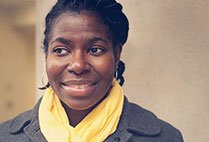








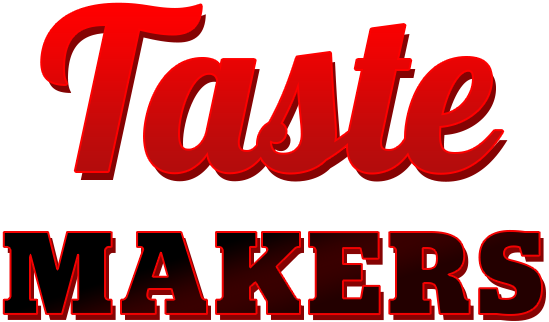
 smooth, full-flavored beverage with dark fruit and licorice notes in the aroma. Pairs well with beef and earthy cheeses.
smooth, full-flavored beverage with dark fruit and licorice notes in the aroma. Pairs well with beef and earthy cheeses.

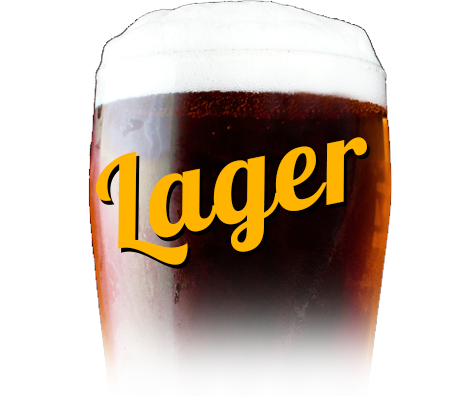
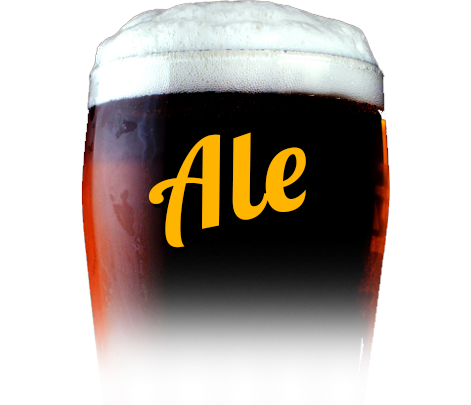
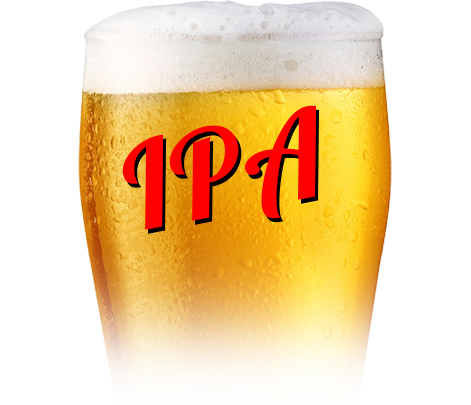
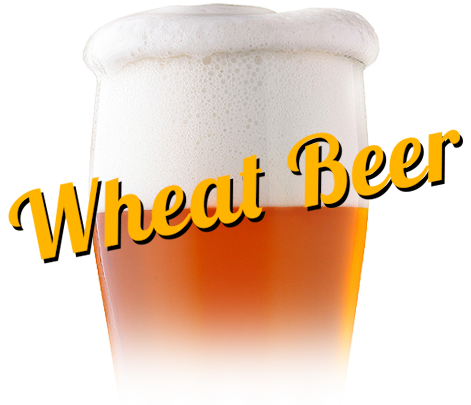
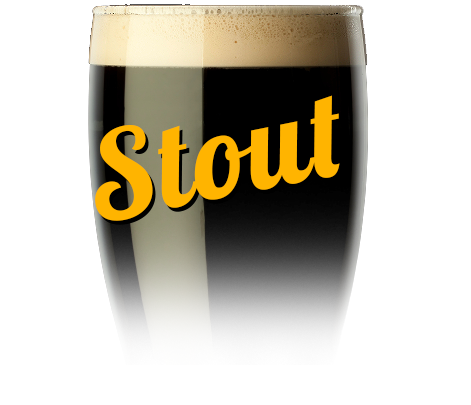
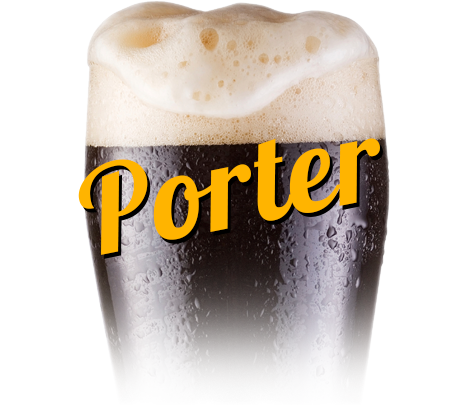





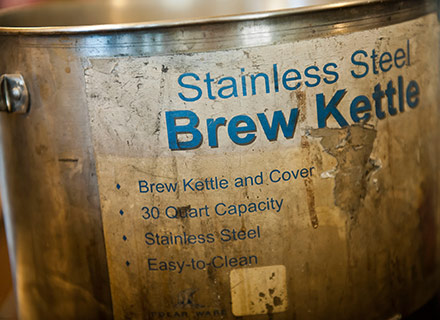

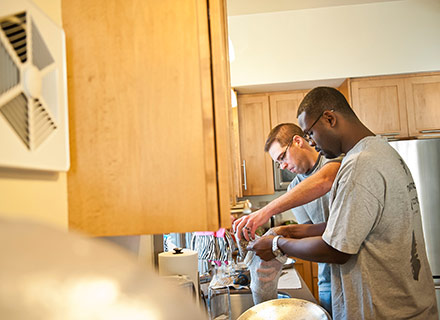




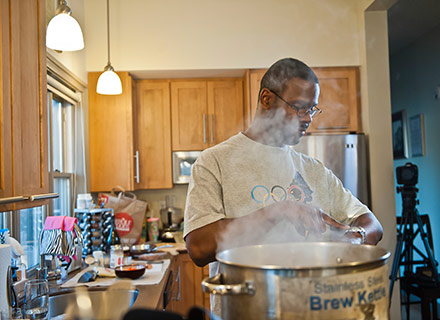
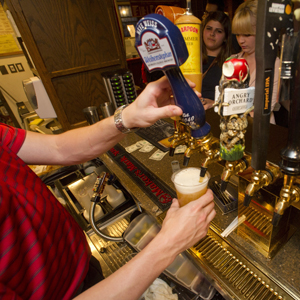
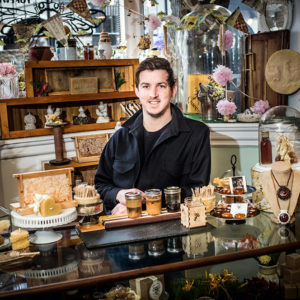
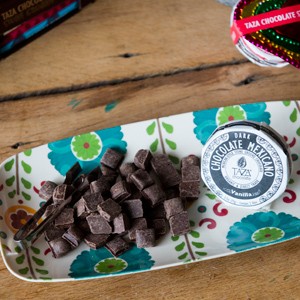
Hi, I’m trying to do my first dryhopping.
Should I do it in the primary fermenter or wait to complete the first fermentation and transfer it to a secondary fermenter?
How long I keep the hops for a good aroma?
Thanks.
http://www.biirkonnen.com
@Erica…
I explored your web site and read your instructions. Bold to have people do an all grain with step mash but fun. Do you have any problems with not racking to a secondary fermenter? No yeast breakdown? Have fun with it.
@ Experts…
Sorry guys, you are the nano kit, not the small brewery. My questions won’t apply to you.
If not 5 gal… then what volume and how do you control for small changes in the smaller volumes? The picture looks like a 2 gallon growler… no?
@ Experts….
Have you made mead commercially, and if so how long do you find you need to age it?
Can you comment on beer aging? I made a very dextrinous oatmeal stout and brown cream ale that has been aging since November (mainly since I can’t drink 12 gallons of beer very fast), but at first when beer is typically fresh, it was pretty sour. It is getting better as it ages. My rule of thumb has been to consume it before 6 months. What comments can you make on aging and what actually happens in the bottle, keg, … I have tried to find this in wine making, but once it is sealed, it seems people just let it go. The prebottling wine literature talks about the transformations of various types of acid but nothing after it has been in the bottle. Let’s write a grant to study aging together?
Hi David,
While we do brew beer with honey (we have a fantastic Honey Sage Seasonal and Grapefruit Honey Ale), we don’t make any straight meads.
As for aging our rule of thumb is the lighter and hoppier the beer is the sooner you want to drink it (within 2 months), while higher alcohol and darker beers can benefit from an additional aging period of 3-4 months. We like to save bottles, try them every two months and record the changes. A Smoked Cherry beer we did took on a really lovely brandy-like character after 6 months, so now we always age that recipe that long.
And as for skipping a secondary fermentation, we haven’t had any problems with yeast breakdown – as these recipes should only be in the fementer for 2-3 weeks. For beers with longer fermentation periods we will use a secondary but tend to prefer bottle aging than keeping a beer that’s finished fermenting in a fermenter.
Fantastic to see BU alums in beer. I turned my garage into a commercial brewery in 2007 (the Healdsburg Beer Company) while working as in-house counsel and business strategist for the owner of the Kendall-Jackson family of wines. I believe I’ve set the record for longest operating nano-brewery and have had an incredible time with it. Cheers!
Kevin McGee (CBS ’90, CLA ’93)
That’s great to hear. Some of the best beers in the world are made in garages (and in kitchens) across the US.
What kind of water should I use to brew my beer? Does it matter?
Dealing with water can be as simple or complicated as you want. A safe rule is if you like the way your water tastes out of the tap, you’ll like it in your beer. If you just don’t like your water, you can filter it or go with bottled water. And if you’re trying to replicate a specific German or Czech style, you can treat it with minerals. Just make sure your water isn’t distilled because that will have less oxygen in it, and oxygen is necessary for healthy fermenting yeast.
Oxygen is not such a problem with the distilled water for a hobby home brewer. I always shake my 6.5-gallon fermenter to incorporate the oxygen from the air in the head. Oxygen is necessary to get the fermentation process going, then undesirable once it has started.
The problem with distilled water is just that, it is distilled and there are no, or fewer, minerals in the water. Some minerals are required for the proper conversion of enzymes in your wort. If you are not working with any malted grains, then this is less of a worry. Be careful with the mineral balance; distilled water gives you a clean slate to work with, but be careful to add back in what is needed for the chemistry.
What’s new for spring? What kinds of flavors can we expect to see from craft beer shops?
Beer is seasonal. Spring is when we shake off the cobwebs and put away our heavy stouts, porters, and brown ales and begin brewing up some lighter Belgian style ales and beers with really fresh aromas. Two of our favorite beers to brew up soon are our Jalapeño Saison and Grapefruit Honey Ale. They’re both really light in body and ideal reminders that winter is coming to an end.
Are some beers supposed to be chilled and others not? What’s a good temperature to keep my beer to enjoy it?
Go with your taste. As a general rule, you’ll want to drink lighter, crisper beers colder and darker beers a little warmer so that their aromas open up as your drink them. If you’re concerned with storage prior to drinking, cellar temperature (mid 50s) is ideal. You’ll want to store IPAs and anything with a fresh hop aroma colder and for a shorter period of time if possible. Whether warm, cold, or in the middle, the key to storage is to keeping your beer out of the light.
How did you decide what kind of yeast to use in your kits? Do you have any recommendations?
@Gina
The best source for specialty yeasts is a good home brew supply store. Find one where some of the employees make 50- and 100-gallon batches of beer. These guys are real enthusiasts and love to experiment.
You can look in books like ones by Papaysian (sp?) who has two; the primary book helps a little but the best source for yeast info is a good home brew store. You could try some online forums as well, but it is better to look a person in the eye to explain how you want to change the character of your brew.
For our kits, we use yeasts that give great flavor and results under a wide set of conditions, like temperature or the efficiency of your mash. There is a wide range of dry and liquid yeasts to help you reach a certain flavor (e.g., banana, clove, fruit, spice, etc.), and once you’re comfortable brewing, you can have fun experimenting with other yeast strains.
Erica and Stephen – Can you still obtain a full flavored beer with a home brew kit (after a few attempts, albeit) as you might hope for as if you bought the bottle in the store? What, if any, short comings are there to home brewing?
The biggest problem to brewing at home is that people tend to develop a strong addiction to brewing MORE beer.
Addendum: You can get good quality beer from a home brew kit if you follow the instructions, be clean, and get a kit with malt extract, not dry malt. It should also come with some specialty grains that you brew like tea to color and flavor the beer. Liquid yeast is nice but a large expense and not completely required. I have had very few batches that I did not like, and I can trace those back to altering the minerals in the water (to simulate an Irish brewery). I am partial to dark beer and have thrown in coffee, chocolate, and molasses among other things to play with the flavor. Your imagination can run wild and you can have fun. My problem is that I like to make it more than I can drink it, so I need to have friends over all the time to keep me going.
@ Mr. Frank,
Home brew is a well established craft. The typical batch is 5-6 gallons which is about 40-44 pints of beer for me. You can vary the amounts of the ingredients to tweak your brew to any desired taste. A good book will teach you how to adjust the characteristics of the water say to duplicate an Irish stout or other beers. You can steep specialty malted barley to change the color, aroma, and flavor. You can add density or thickness by adding malted barley that does not ferment but will give you beer more character, like a Leffe Blonde which is “bready.” You can do kits, or be lazy and ferment 5 gallons of sterile wort that is precrafted and come out with very good results. The key is clean and sterile. Not lab-quality sterile, but make sure that you pay attention to a few key steps. The shortcomings to home brew is that it takes up some space and can be a mess; 98% of mine boil over, so there is some cleanup based on how fast I catch it. You can also get a mess too if you don’t rig up a blowoff tube for your primary fermentation. The first batch my roommate and I made launched the fermentation lock and much unfermented wort onto the ceiling in what must have been a spectacular event based on the artwork left behind (we had brewed and set off to the bar to celebrate). Bottling is a bit of a hassle. Read some books or write people for tips. You will have to clean and sterilize 42 pints worth, Grolsch bottles are best for bottling due to the lack of capping. Home kegging systems are even better and make home brew simple but can run about $350 for the simplest. Many people start but are daunted. It is no harder than cooking and keeping a few things clean. The few tricks can be learned. Find a local chapter of the Free Beer Seminar to get some help. ;)
The coolest thing about making beer at home is that the process and ingredients you use are the same as what you’ll find in some of your favorite craft breweries. It’s just scaled down for your stovetop. When you’re making beer at home, you can use ingredients that might be too expensive for a brewery because you don’t have to worry about the cost of a bottle being a few cents higher than the next beer on the shelf. The biggest shortcoming to making beer at home is that it may tempt you to quit your job as a lawyer and start interning at a brewery.